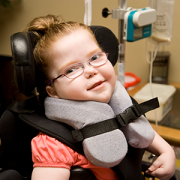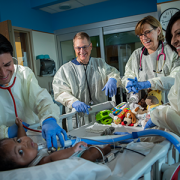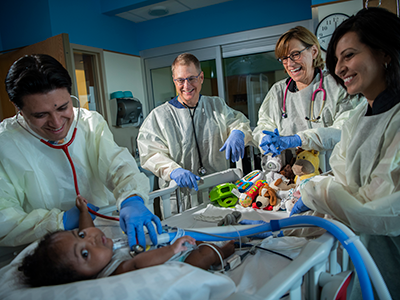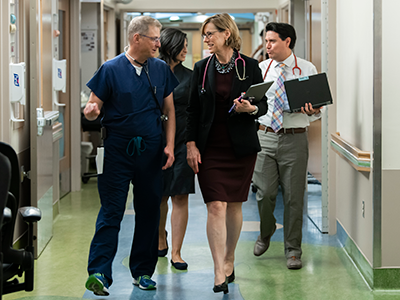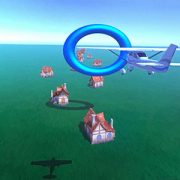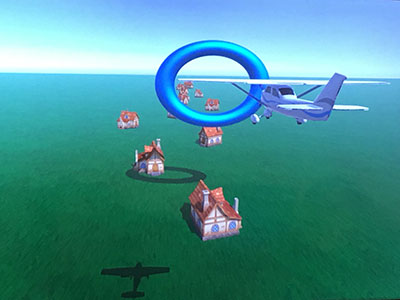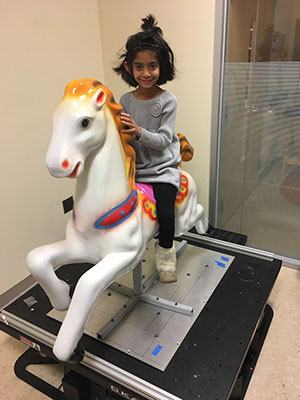A holistic and proactive approach to the management of the patients with cerebral palsy
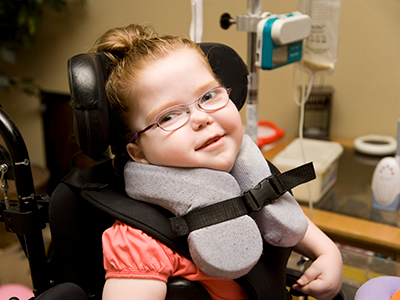
The cerebral palsy program at Children’s National Hospital takes a comprehensive approach to meet children’s needs from infancy through young adulthood.
Though children with cerebral palsy (CP) often require significant rehabilitative and surgical support, most often each service is provided in the individual specialty itself. Patients and their families frequently experience a great deal of stress coordinating care, getting to appointments, keeping track of medications and managing treatments on their own.
However, the CP program at Children’s National Hospital, co-led by an orthopaedic surgeon, Sean Tabaie, M.D., and a pediatric rehabilitation specialist, Olga Morozova, M.D., working together and in collaboration with Shannon Kelly, M.D., (Orthopaedics) and Jeff Rabin, D.O., (Physical Medicine and Rehabilitation) has evolved into a truly comprehensive approach. The program is designed to meet the needs of these children from infancy through young adulthood with the goal of improving function and preventing musculoskeletal deformities and complications.
Providing children and their families with a single point of care coordination allows the care team to track and anticipate a multitude of potential challenges for each child as early as possible and intervene in smaller ways before they bring pain and long-term complications or require major surgical interventions. Key highlights of this collaborative program include:
- Hip surveillance: Patients with CP are followed closely to identify hip pathology prior to serious subluxation or dislocation. Early identification allows for the use of medical or surgical interventions to prevent a minor issue from becoming a major one.
- Serial casting for children with early signs of muscle contractures: Dr. Morozova uses agents to relax the muscles and Dr. Tabaie applies the cast in the operating room followed by continued weekly serial casting in the clinic. “Proper medical management and bracing at regular intervals can improve muscle function and prevent the need for larger surgeries and more intense rehabilitation later,” says Dr. Morozova.
- Advanced coordination between physical therapy in the hospital and outpatient services in the region, building on the hospital’s partner agreement with the HSC Health Care System.
- Single event multi-level surgeries (SEMLS): Ensuring that surgical procedures capture all surgical needs at one time by assessing the entire anatomy and scheduling multiple surgical or pharmaceutical interventions to occur in a single session.
The doctors point out that offering these services in one cohesive location and combining treatments into the same appointment or procedure date is something that many patients with CP and their families truly appreciate.
“I think families of children with CP will travel great distances if the care they receive is comprehensive and eliminates some of the back and forth travel they do now,” says Dr. Tabaie.
Today, the team sees close to 100 patients with CP per month and hopes to expand to reach as many families in the region and beyond who need them.
Dr. Tabaie says, “Our goal is to identify patients early and start managing them to help their quality of life today, prepare them to grow as healthily and in as little pain as possible and set them up to be as healthy as they can possibly be as adults, too.”


